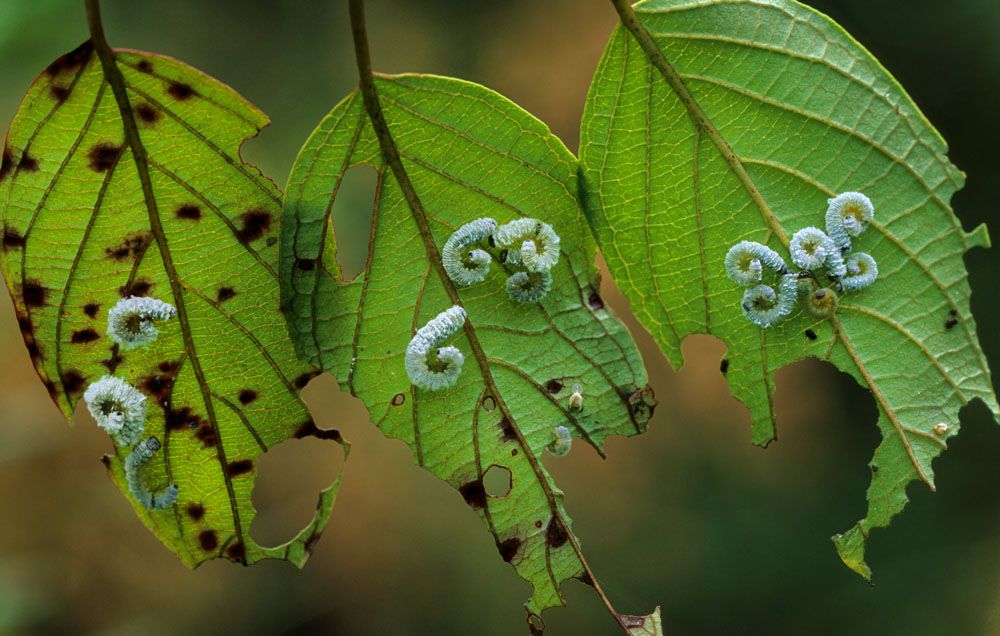
Dogwood Sawfly – Macremphytus tarsatus
Dogwood Sawfly – Macremphytus tarsatus
Common Name: Dogwood Sawfly
Latin Name: Macremphytus tarsatus
Appearance:
- Adult sawflies emerge in early spring and lay their eggs on the undersides of leaves. The first-stage larvae are small, yellow, and transparent when the eggs hatch in the middle of the summer.
- They acquire a white waxy covering as they develop and molt.
- They often curl up and cling to the underside of leaves throughout the day. They are frequently highly sociable, gathering in groups of a dozen or more on a single leaf.
- Though unattractive, their vast numbers can result in significant defoliation that often won’t harm the plant because it occurs late in the growing season. They often cease eating after their last molt and look for a safe place to spend the winter. They will pupate in the early spring and then emerge as adults.
